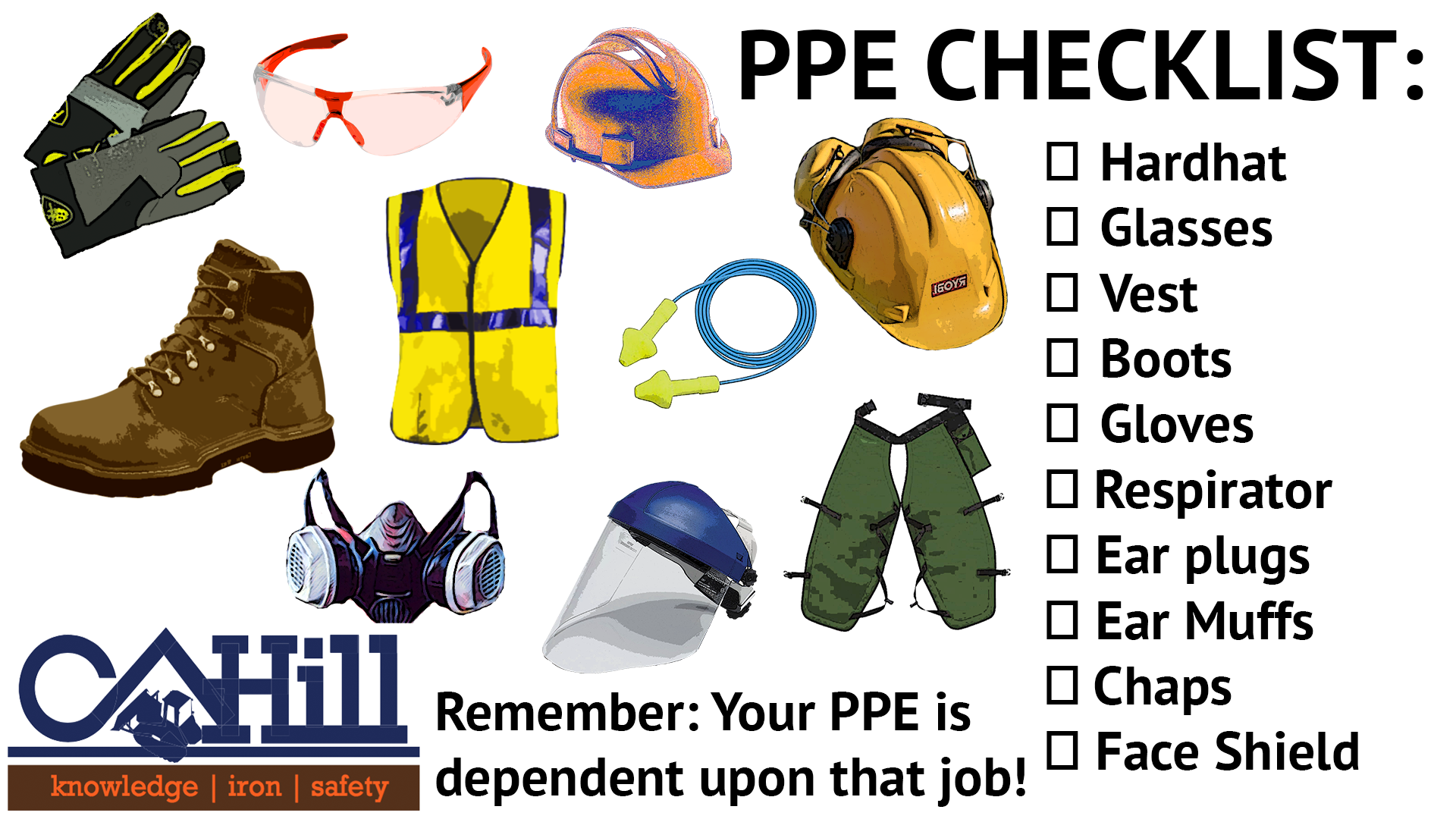How to Dress for Success: PPE and Lifesaving Equipment
Growing up, a popular halloween costume in my neighborhood was to dress up as a construction worker. Little children look up to the brave, tough construction workers who build great and mighty things. Or maybe these kids were simply the children of actual constructor workers who just ran out of time or imagination. “Uh Dad, can I wear your hardhat again this year?” On the other hand, their parents (the real life builders of great and mighty things) probably didn’t enjoy gearing up in their daily PPE for a variety of reasons. Who does? Why put on more layers in the middle of summer while laboring on steaming hot pavement surrounded by even hotter machinery? Who desires to restrict their movement when doing a nimble-fingered task? And how many (since 1989 at least) think it a fashion statement to don a big orange hat and the same neon yellow outfit to work every day??
For those in construction, the answer is obvious: People who want to go home in one piece at the end of the day! People who want a long, productive, fulfilling career. People who value their eyesight, hearing, lungs, hands, feet, and brain more than avoiding a little external discomfort.
It took a worldwide pandemic to make “PPE” a household acronym. Before 2020 it was unlikely that most people outside of the construction or medical fields even knew what those three letters even stood for. Personal Protective Equipment – the body armor of the trade; from gloves and goggles to full face respirators and lifesaving body harnesses.
A Hard Headed Lesson
I build training videos for the aQuiRe© app, not bridges or buildings. Several years ago, the first time we had to film at an active construction site, I was told, “don’t forget your PPE.” (PPE? Thank you Google). But the morning before the shoot, standing in front of the mirror in my hi-viz vest and struggling to figure out how to adjust my hard hat, I could hear my family holding back the giggles. “I feel ridiculous,” I thought. Besides, it would be a lot easier to do my job without these clunky steel toe boots. And my fancy over-the-ear headphones aren’t designed for helmeted camera operators.
But you know who I found out looks silly? The new guy who strolls onto a jobsite for the first time thinking he is too cool for PPE. Or the worker who gets injured because she felt too tough for the gear. Or the overconfident teammate who thinks they are too experienced to get hurt.
10 minutes into that first shoot I ducked under a paving rig a bit too quickly and bounced my plastic covered noggin off a beam. From that point on, I had something in common with the rest of the workers on that job – we don’t think twice about the value of the PPE we are wearing. It doesn’t get in the way of doing our job. It helps us do our job.
Assessing Your Environment
On an active construction site hazards are literally everywhere. It’s on the ground beneath your feed, or swinging above your head. It can be the massive machines driving nearby or the small sharp tool in your hand (or in the hand of the distracted worker next to you!) It’s even in the air you breathe, the sound waves you hear, or the extreme weather rolling in. And it’s the employers responsibility to assess these hazards and take the appropriate steps to keep their workers safe.
According to the hierarchy of hazard controls, the first step is to try to eliminate the hazard entirely, but this is not typically feasible. Next, is to try to engineer, or isolate people from the hazard. The third level, administrative controls, is to enact policies or provide training to create safer behaviors.
PPE is the last line of defense, when all other levels of control either fail or are simply not feasible to implement. OSHA stipulates that it’s the responsibility of the employer to provide the appropriate PPE for the task required. The PPE must be well maintained and fit the employee well. The employer also needs to train their workforce how to properly use the PPE provided.
But just because the people above you need to think about these things, that doesn’t mean you can mentally check out. As CaHill expert trainer Jim Jones continually hammers, “You are your own competent person.” Which means, the very best way to stay safe is to make an intentional decision to stay safe. That’s your responsibility. And it includes two things:
- Learn as much as you can about PPE. Know what your options are, how to wear and use it properly, how to inspect it daily, and how to keep it clean.
- PUT IT ON! If you want to be a construction worker who is taken seriously then dress like one.
To help our clients, CaHill recently completed a three part series on all this and more concerning PPE, which are now available on the aQuiRe© app. Check them out. As I can attest, it’s a much more enjoyable way to learn these lessons than a whack on the head.

